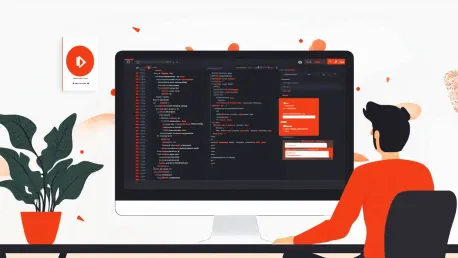The year 2024 has been a transformative period for software development, marked by significant advancements and emerging trends that have reshaped the industry. This article delves into the key developments that have defined the software development landscape, offering insights into the technologies and practices that are driving innovation. From the rise of AI tools to the shift towards sustainable software engineering, the industry has undergone profound changes that continue to influence how developers approach their work.
The Rise of AI Tools in Software Development
Artificial Intelligence (AI) tools have continued to revolutionize software development in 2024. AI tools like ChatGPT, which gained prominence in late 2023, have become integral to the development process. These tools enhance productivity by automating repetitive tasks, providing code suggestions, and assisting with debugging. Developers are leveraging AI to streamline their workflows, allowing them to focus on more complex and creative aspects of coding. The symbiotic relationship between AI and human developers is fostering a more efficient and innovative development environment. AI tools have not replaced human expertise but rather augmented it by handling routine tasks, freeing developers to tackle more strategic challenges. This collaboration between AI and human developers allows for a higher quality of work and more innovative solutions. Furthermore, AI’s role extends beyond coding assistance; it is being used for project management, quality assurance, and even in predicting project outcomes. This comprehensive application of AI tools is transforming how software development projects are planned, executed, and delivered, creating a more cohesive and effective workflow for development teams.
Cloud-Based Solutions Over Traditional Workstations
The shift towards cloud-based solutions has gained momentum in 2024, with many developers opting for cloud desktops over traditional high-end workstations. Cloud-based environments offer several advantages, including scalability, cost efficiency, and seamless collaboration. As development projects become more complex, the need for flexible and scalable solutions has become paramount. Cloud desktops provide developers with the ability to access their work from anywhere, facilitating remote work and collaboration across different geographies. This flexibility is crucial in today’s globalized work environment, where teams are often distributed across multiple locations. Additionally, cloud-based solutions reduce the need for expensive hardware investments. Developers can scale their resources up or down based on project requirements, ensuring cost efficiency. This scalability also allows for better resource management, as developers can allocate computing power as needed, optimizing performance and reducing waste. The move towards cloud-based solutions represents a significant shift in how development work is approached, offering developers greater flexibility and efficiency in managing their projects. By leveraging cloud technology, development teams can focus on innovation and problem-solving, rather than being bogged down by the limitations of traditional workstations.
Addressing Cybersecurity Challenges
Cybersecurity remains a critical concern in the software development industry, and in 2024, prompt injection has emerged as a significant threat to large language models (LLMs). Prompt injection involves malicious prompts that manipulate an LLM’s behavior to access unauthorized information, posing substantial security risks. To mitigate these vulnerabilities, developers are adopting proactive security measures such as implementing robust authentication protocols, conducting regular security audits, and continuously monitoring AI systems. By staying vigilant and adopting best practices, developers can safeguard their projects against potential threats, ensuring the integrity and security of their work. Programming skills are also becoming increasingly important in cybersecurity. Cybersecurity analysts are encouraged to enhance their coding skills to better understand and address security challenges. A strong foundation in programming enables analysts to develop more effective security solutions and advance their careers in the cybersecurity field. Understanding the intricacies of code allows cybersecurity professionals to identify and address vulnerabilities more efficiently, making them more valuable assets to their organizations. The emphasis on programming skills in cybersecurity underscores the importance of a well-rounded skill set for addressing the complex security challenges of modern software development.
Optimizing CI/CD Pipelines for AI-Assisted Coding
Continuous Integration/Continuous Deployment (CI/CD) pipelines are undergoing significant transformations to accommodate AI-assisted coding, and in 2024, developers are exploring strategies and best practices to optimize these pipelines. AI-assisted coding tools can enhance the efficiency and quality of CI/CD pipelines by automating testing, code reviews, and deployment processes. This automation reduces the likelihood of human error and accelerates the development cycle, allowing for faster delivery of high-quality software. By integrating AI tools into CI/CD pipelines, developers can streamline their workflows and improve the overall development process. Developers are also focusing on creating robust feedback loops within CI/CD pipelines. By continuously monitoring and analyzing the performance of AI tools, they can make data-driven decisions to improve the development process. This iterative approach ensures that AI tools are constantly refined and optimized for better results. The optimization of CI/CD pipelines for AI-assisted coding represents a significant shift in how development work is approached, offering developers greater efficiency and accuracy in their workflows. By leveraging AI tools within CI/CD pipelines, development teams can focus on innovation and problem-solving while maintaining a high standard of quality in their work.
Embracing Sustainable Software Engineering Practices
Sustainability has become a key focus in software engineering, with a growing awareness of the environmental impact of technological practices. In 2024, there is a collective movement towards making software engineering faster, more productive, and environmentally friendlier. Developers are adopting practices that minimize energy consumption and reduce carbon footprints, such as optimizing code for efficiency, utilizing energy-efficient hardware, and leveraging cloud-based solutions that offer better resource management. By prioritizing sustainability, the software development industry is contributing to a greener future and setting a positive example for other sectors. Gartner’s report on trends influencing software engineering in 2024 highlights the importance of sustainability. The report emphasizes the need for speed, efficiency, and environmental responsibility, reflecting a broader industry trend towards sustainable development practices. This shift towards sustainability is not only benefiting the environment but also enhancing the overall efficiency and productivity of development teams. By adopting sustainable practices, developers can create high-quality software while minimizing their environmental impact, contributing to a more sustainable and responsible industry.
Advancements in AI Integration at Google I/O 2024
The year 2024 has been a transformative period for the software development industry, characterized by notable advancements and emerging trends that have significantly reshaped the landscape. This article delves into the key developments that have defined software development, shedding light on the technologies and practices currently driving innovation. The rise of AI tools has been particularly impactful, bringing smart automation and enhanced capabilities to developers’ toolkits. Additionally, there has been a marked shift towards sustainable software engineering, reflecting broader environmental concerns and the need for efficient, eco-friendly practices. These changes have profoundly influenced how developers approach their work, highlighting the dynamic and ever-evolving nature of the field. As we move forward, understanding these trends and advancements will be crucial for staying ahead in this rapidly changing industry.









